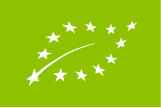Certificate
European EN Standards
EN 1500 – HAND DISINFECTION
Chemical disinfectants and antiseptics- Hygienic hand sanitizer
EN 13624 – FUNGICIDAL OR YEASTICIDAL EFFECT
Quantitative suspension test for the evaluation of fungicidal or yeasticidal activity in the medical area
EN 17272 – AIRBORNE ROOM DISINFECTION
Quantitative carrier test for airborne room disinfection by automated processes
EN 14476 – VIRUCIDAL EFFECT/ CORONAVIRUS FAMILY
Quantitative suspension test for the evaluation of virucidal activity in the medical area. Tested on several viruses and the coronavirus group of viruses
EN 13623 – EFFECT AGAINST LEGIONELLA
Quantitative suspension test for the evaluation of bactericidal activity against Legionella of chemical disinfectants for aqueous systems.
EN 13610 – CHEMICAL DISINFECTANTS IN FOOD AND INDUSTRIAL AREAS
Quantitative suspension test for the evaluation of virucidal activity against bacteriophages of chemical disinfectants used in food and industrial areas.
EN 13697 – SURFACE DISINFECTANTS
Chemical disinfectants and antiseptics – Quantitative non-porous surface test for the evaluation of bactericidal and/or fungicidal activity of chemical disinfectants used in food, industrial, domestic and institutional areas.
The Article 95 list of active biocidal substances
PT 1 – Disinfectant for human hygiene
PT 5 – Disinfectant for drinking water for humans and animals.
Approved for organic production
The substances listed in Annex VII (1) have been authorised for organic production in the EU. In the group’s opinion (Expert Group on Technical Advice on Organic Production), there is a broad consensus that these substances (listed in Annex VII.1) are in line with the objectives and principles of organic production.
In the group’s opinion, the use of electrolysed water is similar to the use of sodium hypochlorite. It can therefore be used for any purpose for which sodium hypochlorite is approved, but not for any other purpose. Currently, the group sees no reason to clearly indicate electrolysed water.



